

Welcome, Freshmen. Look at Me When I Talk to You. - The Chronicle of Higher Education. Join student clubs.
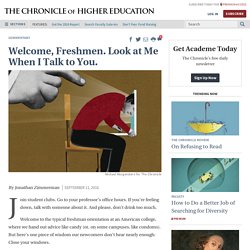
Go to your professor’s office hours. If you’re feeling down, talk with someone about it. And please, don’t drink too much. Welcome to the typical freshman orientation at an American college, where we hand out advice like candy (or, on some campuses, like condoms). But here’s one piece of wisdom our newcomers don’t hear nearly enough: Close your windows. I’m talking about those distracting windows on your computer. 5 Apps to Transform Teaching and Personalize Learning. Transformation requires a journey for teachers toward great educational rewards for students.
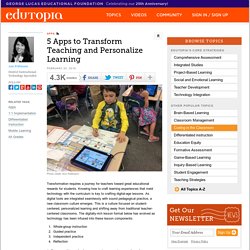
Knowing how to craft learning experiences that meld technology with the curriculum is key to crafting digital-age lessons. As digital tools are integrated seamlessly with sound pedagogical practice, a new classroom culture emerges. This is a culture focused on student-centered, personalized learning and shifting away from traditional teacher-centered classrooms. The digitally-rich lesson format below has evolved as technology has been infused into these lesson components: Whole-group instruction Guided practice Independent practice Reflection 1. Whole-group instruction has traditionally been delivered in lecture format: the teacher stands in front of the class and presents the same lesson to everyone at the same time.
Education Week. Professional development is the rare policy that researchers, policymakers, and practitioners can agree on.
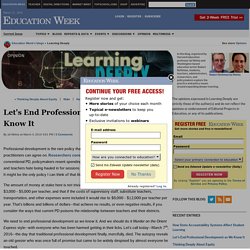
Researchers consistently find small or no effects of large-scale conventional PD, policymakers resent spending money on something that has no proven effects, and teachers hate being hauled in for sessions that they perceive are disrespectful and of little value. It might be the only policy I can think of that literally no one wants to defend. The amount of money at stake here is not trivial. One estimate finds that the listed amount is $3,000 - $5,000 per teacher, and that if the costs of supervisory staff, substitute teachers, transportation, and other expenses were included it would rise to $8,000 - $12,000 per teacher per year.
That's billions and billions of dollars--that achieve no results, or even negative results, if you consider the ways that current PD poisons the relationship between teachers and their districts. Creating a Writers' Workshop in a Secondary Classroom. In the middle of the school year, I always regret my choice of becoming an AP and Honors English teacher.

Not because I hate to teach, but because I'm always swimming in essays that I have to grade. In order to accommodate the load, I adapted the elementary way of thinking and formed a writers' workshop for my own classroom. Once they participate in the workshop, students are able to learn how to revise their own essays.
5 Apps to Transform Teaching and Personalize Learning. Three Reasons Students Should Own Your Classroom’s Twitter and Instagram Accounts. It is quickly becoming a non-negotiable for all classrooms to leverage social media in order to communicate with families and other classrooms—thus engaging others in the daily lives of students.

While simply posting “fun” photos is a start, this novelty wears off quickly, and as a result, we must think more critically about how we communicate via social media. As a second grade teacher who facilitates a student-centered classroom, I now believe our use of social media is an opportunity for students to partake in the type of learning in which they can thrive and shout their story to the world. 1. Genuine Digital Citizenship Opportunities In fall 2012, I liked the idea of Twitter, but the thought of social media infiltrating my classroom was still a bit scary. How People Learn: An Evidence-Based Approach. Proposals to "professionalize teaching" are popular today, but agreement about what this should entail is elusive.

At Deans for Impact, an organization composed of leaders of programs that prepare new teachers, we believe that part of what distinguishes members of a profession is general agreement on a body of domain-specific knowledge that is relevant to practice. We recently released "The Science of Learning," a report that summarizes the cognitive science related to how students learn. The Difference Between Pedagogy, Andragogy, And Heutagogy. The Difference Between Pedagogy, Andragogy, And Heutagogy. Education Week. Students Help Design School Supplies for Staples. Students should be involved in their education.
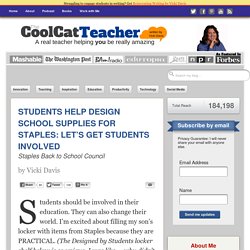
They can also change their world. I’m excited about filling my son’s locker with items from Staples because they are PRACTICAL. (The Designed by Students locker shelf below is so unique, I was like — why didn’t some adult think of that?) Staples worked with Ron Clark’s students (pictured above) and others around the country during this past school year. 8 Things to Look for in Today’s Professional Learning (Part 1)
8 Things to Look for in Today’s Professional Learning (Part 2) What is Personalized Learning? - Rodel Foundation of Delaware. SRI Affiliate Application « School Reform Initiative. 9 Quick Tips for Taking Ownership of Your PD. Many schools across the country have professional development days built into their calendar and regularly send teachers to sessions related to their discipline or passion.
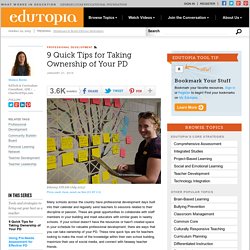
These are great opportunities to collaborate with staff members in your building and meet educators with similar goals in nearby schools. If your school doesn’t have the resources or hasn't created space in your schedule for valuable professional development, there are ways that you can take ownership of your PD. These nine quick tips are for teachers looking to make the most of the knowledge within their own school building, maximize their use of social media, and connect with faraway teacher friends. In Your Own School 1. Teaching and Learning through Design Thinking - EdTech Researcher. Last week was a big week for design thinking in education, both in the field and for me personally.

In the wider world, Edutopia is hosting a free course on Design Thinking for Educators which launched last week and continues this week. For me, I facilitated a "Design Charrette" learning group at Project Zero's Future of Learning Institute. The Future of Learning Institute is a professional program run by the Harvard Graduate School of Education. Blended learning: The great new thing or the great new hype? This is the learning lab at Rocketship Discovery Prep in San Jose, Calif., Monday April 30, 2012.
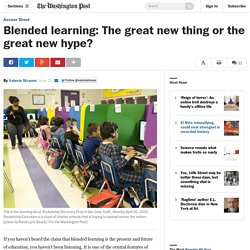
Rocketship Education is a chain of charter schools that is hoping to spread across the nation. Notebooks in the Cloud: Microsoft OneNote. Learn how to get started with Microsoft OneNote to support your Digital Organization Strategy. Access your notebook across devices and collaborate with others. This webinar will review the basic features of OneNote and educational uses. Julia is an educator turned Professional Development Strategist for Clarity. As a middle school classroom teacher using innovative teaching methods led to her first roles as an educational trainer.
From there she moved into a district level position where she oversaw professional development from the educational technology department. Learn how to get started with Microsoft OneNote, including features and educational uses, to support your Digital Organization Strategy. Step by Step: Designing Personalized Learning Experiences For Students. The phrase “personalized learning” gets tossed around a lot in education circles.
Sometimes it’s used in the context of educational technology tools that offer lessons keyed to the academic level of individual students.